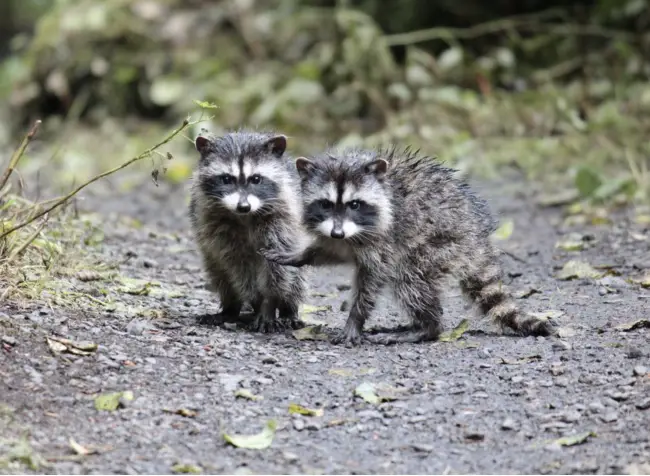Raccoons are restless and highly intelligent mammals. Even though they are most active from dusk until sunrise, some of them are often seen in daytime as well. Not only are they highly adaptable but they eat a lot of different foodstuff. In cold days, you would rarely witness a raccoon out during the day since it moves back to its den. Contrary to the common belief, raccoons do not hibernate (in its true sense) during winter, like most other animals. As soon as winter fades away or even in mild winter, they occasionally come out again, looking out for food and shelter.
Since raccoons are nocturnal animals, they are supposed to be out during the night, right? Probably not, but people sometimes wonder,
“Is it ok if you see raccoons during the day?” and if so, then why are there raccoons out in daytime?
Why is there a raccoon out during the day?
Well, a short answer is: it depends. However, most people would think that such coons might be sick or rabid. While this may be true on occasions, but of course, this is only one of the many reasons for a raccoon out in daylight. When a coon becomes sick, there would be noticeable rabid raccoons symptoms. For instance, a coon may become lethargic in its movement or it may not be able to move its hind legs or often fall over while moving around.
Learn more: Where Do Raccoons Sleep?

In reality, if you see raccoons out in daytime, there may be good reasons for them to venture out. Let’s say, for instance, in the New York City, female raccoons sometimes seek out more food and drink during the day so that they may nurse their babies. In order to feed its young ones, a female raccoon has to have good nutrition to remain healthy. Therefore, in breeding season, people will occasionally see them in search of some additional food.
Learn more: Are Raccoons Rodents?
Moreover, it is also quite possible that raccoons may be looking out for shelter. A raccoon has to find the new nest if its old nest is destroyed for some reason. Consequently, these animals may have to seek out new habitat where food and water are not far away. For that reason, some raccoons need to make an extra effort even in daylight hours in order to find new nest.
Learn more: Where Do Raccoons Live?
Finally, few young raccoons are often unable to find their way to the colonies. As a result, they may roam around in the day to search for water and food.
All in all, if you have raccoons in your backyard or if you spot any raccoon out in daylight, there is no reason to worry about if their movement is smooth and agile. A sick raccoon, however, is not active enough to rummage food for itself and will show some clear signs.
Learn more: Can Raccoons Climb Trees and Fences?
What should you do if you spot raccoons during the day
As a note of caution, when you see raccoons during the day, do not try to feed them even in daylight or come any closer. This is because these animals do not seem to be scared of people at all and active raccoon will find its own food anyway. As a result, they can easily become habituated to humans. It is, therefore, advisable to leave raccoons alone as they are smart enough to rummage food in their own way.
If a raccoon behaves in an unusual way, like if it seems to be
- paralyzed or disoriented;
- walking round in a circle;
- unsteadily moving;
- or perhaps showing unprovoked aggression or overly friendliness,
then you must immediately contact your local animal control.
